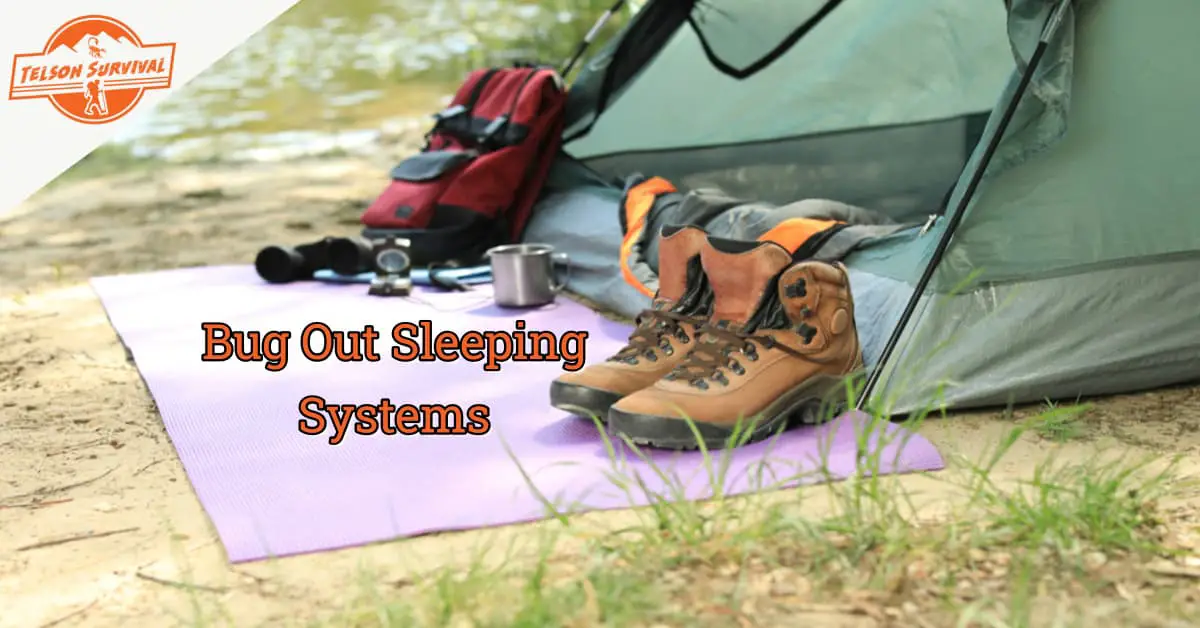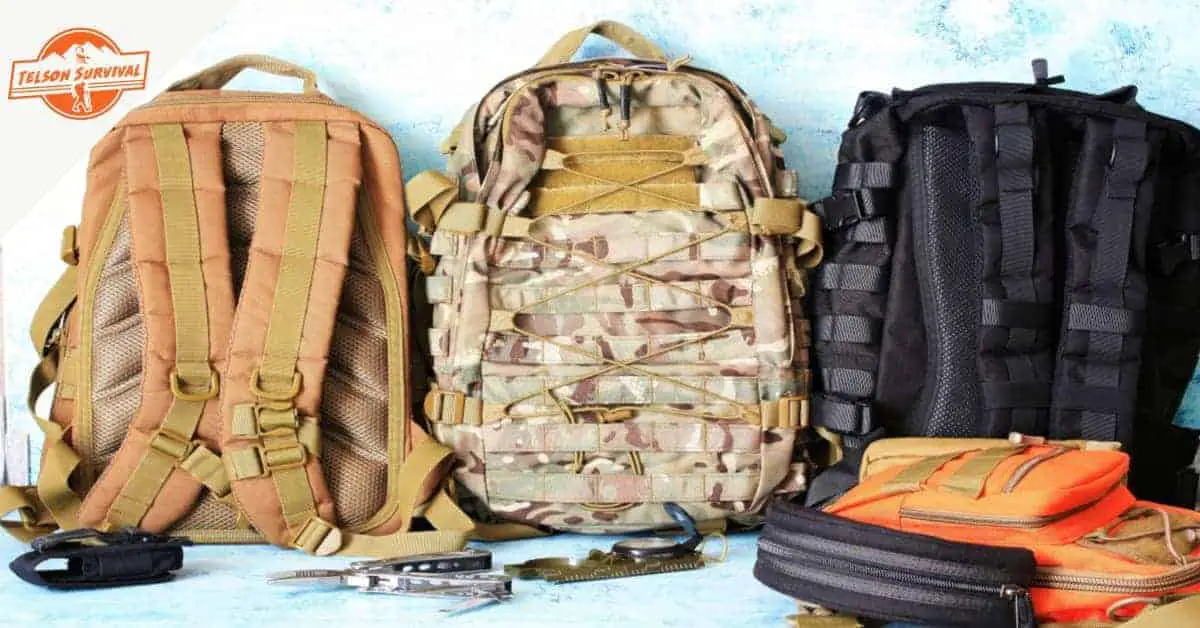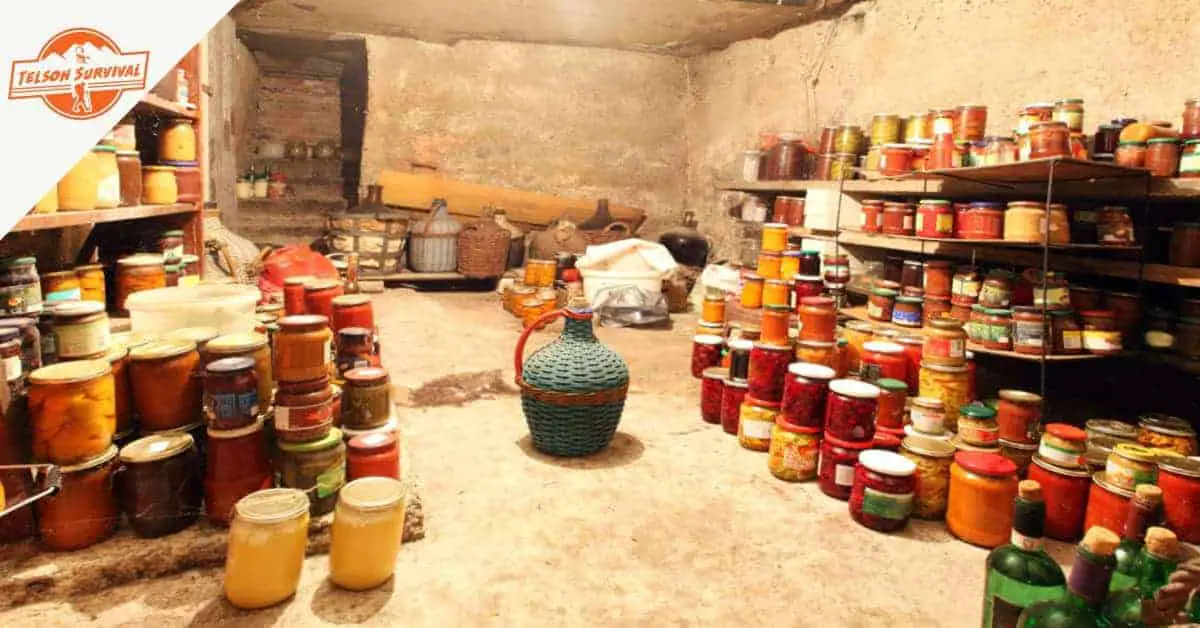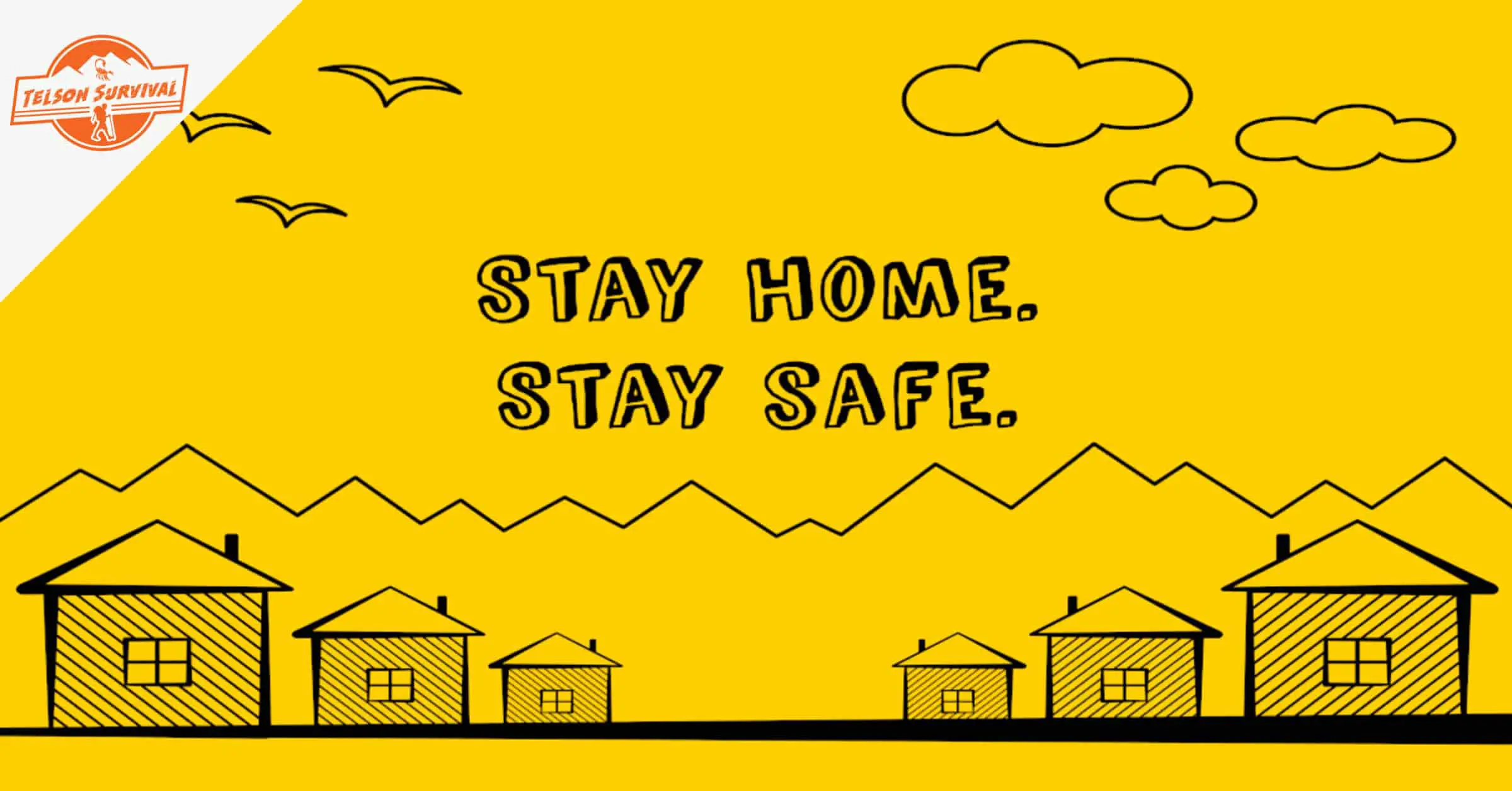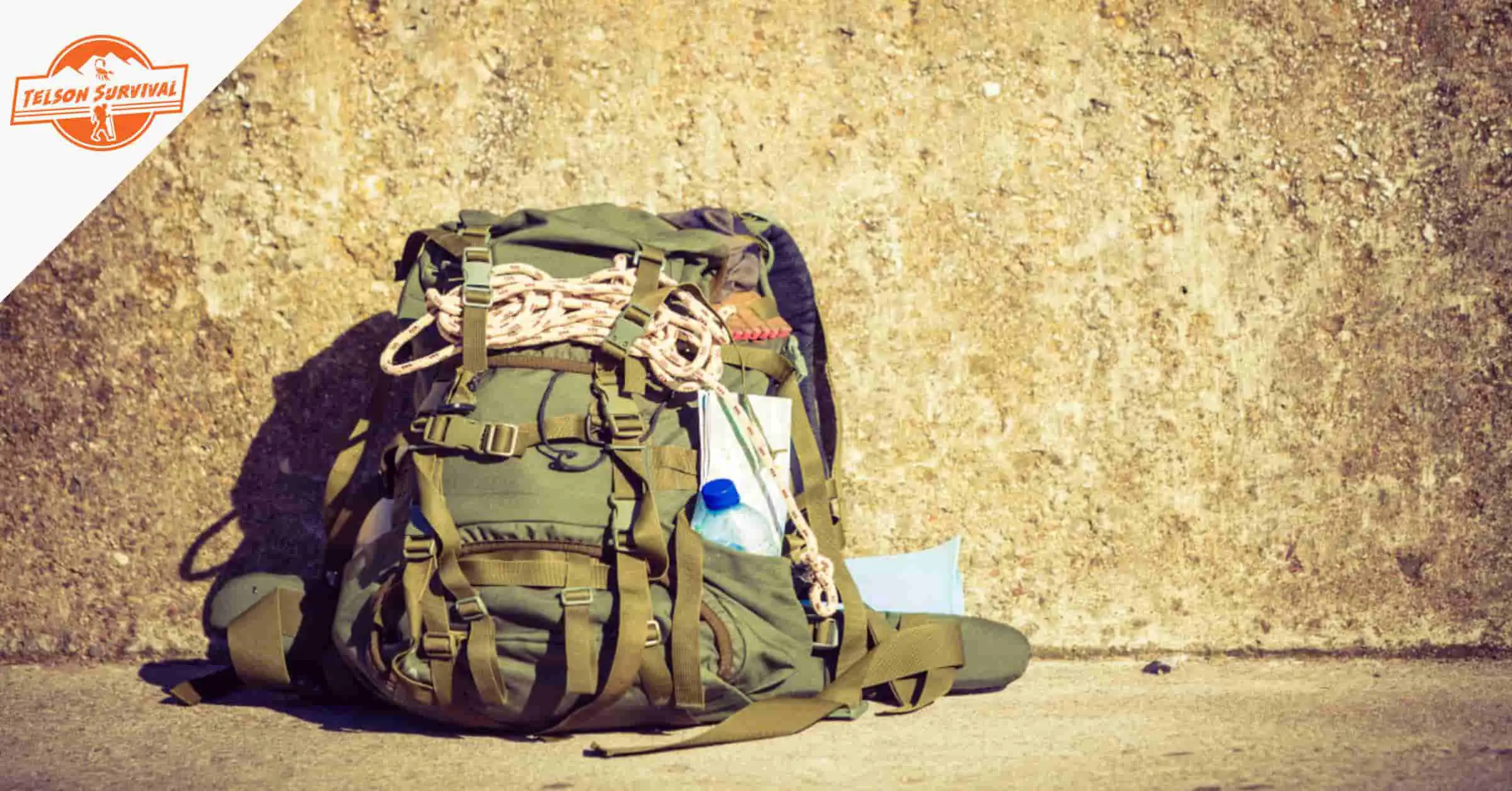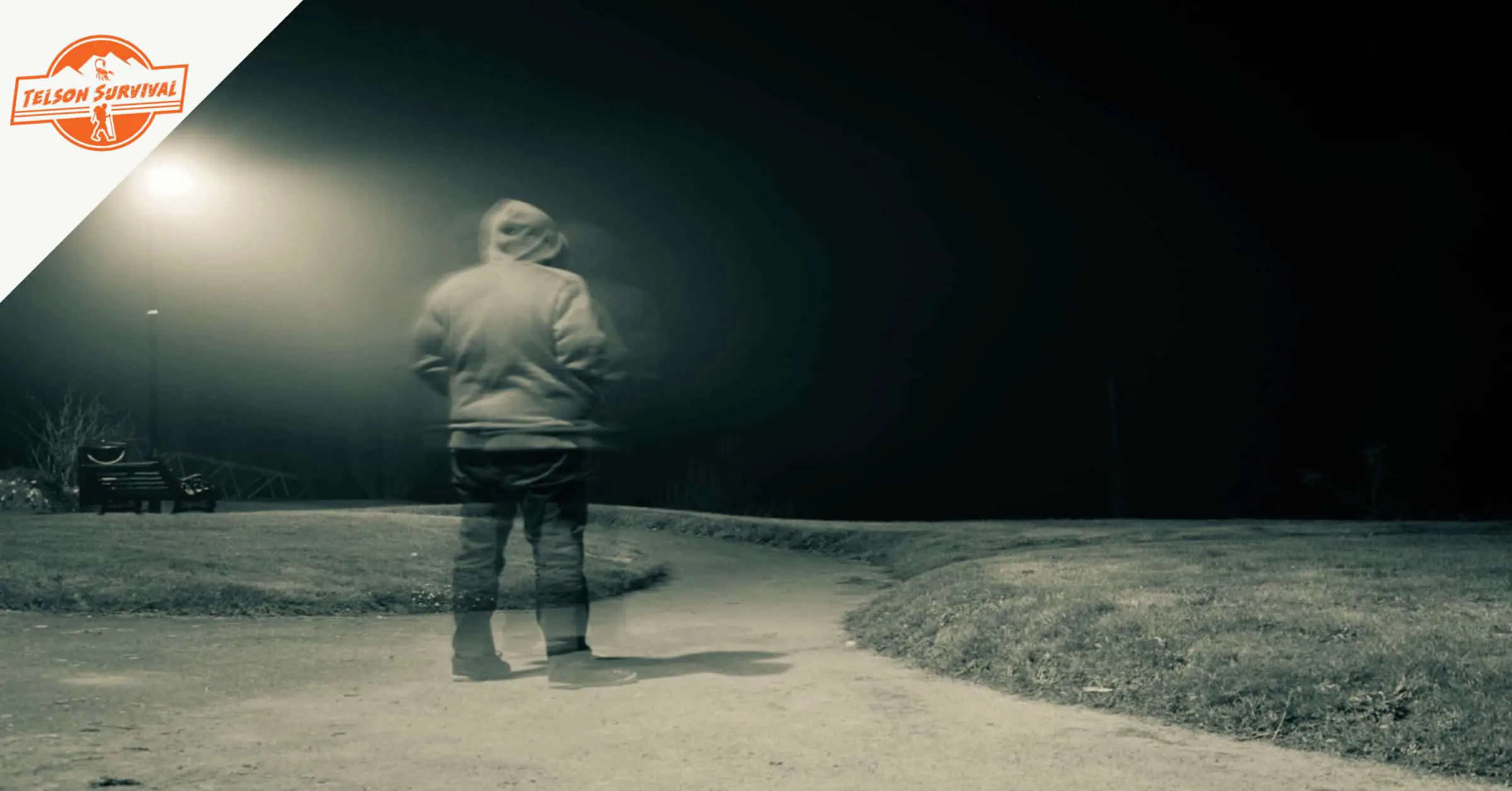Sleep is crucial for survival. And while most of us already know that a good night’s sleep is healthy in ordinary life circumstances, a few of us stop to think that good sleep is also crucial for survival in SHTF situations.
If you have been walking all day to get away from a city that’s messed up by civil unrest and you find yourself in the wild or some government-run shelter out of the city, a good sleep won’t just replenish your physical energy, it will also refresh your brain so you can sort out important issues on your survival chances.
The point? You need to plan ahead of time about how you put your head down for some good rest during an emergency, and that means including a sleeping system in your bug out bag.
If you just wondered what a bug out bag sleeping system is, you just asked the first of the questions well be answering in this article:
- What is a Bug out Bag System?
- What Items make your Go Bag Sleep System?
- How should You Combine Sleeping Gear when Bugging Out?
- How does a Survival Scenario Determine the Components of a Bug out Bag Sleeping System?
- What Tricks and Tips should I Use to Pack my Sleeping System in a Bug out Bag?
Let’s get straight to answering each of these questions.
In a hurry? If you just want to get to our conclusions, here are our top picks and recommendations!
| Preview |
Product |
Price |
|

|
Clostnature Polaris Lightweight Backpacking Tent - 2 Person Ultralight Waterproof Camping Tent, 3...
|
$99.99
$79.99 |
Buy On Amazon |

|
Sleeping Bag - 4 Seasons Warm Cold Weather Lightweight, Portable, Waterproof Sleeping Bag with...
|
|
Buy On Amazon |

|
Sleeping Pad for Camping - Ultralight Sleeping Mat for Camping, Backpacking, Hiking - Lightweight,...
|
$49.95
$28.99 |
Buy On Amazon |

|
Amazon Basics Waterproof Camping Tarp, 10 Feet by 12 Feet, Dark Green
|
$17.09 |
Buy On Amazon |

|
Go Time Gear - Life Bivy Emergency Sleeping Bags for Survival - Use as Emergency Bivy Sack, Survival...
|
$19.95 |
Buy On Amazon |

|
Wise Owl Outfitters Hammock for Camping Single Hammocks Gear for The Outdoors Backpacking Survival...
|
|
Buy On Amazon |

|
TREKOLOGY Ultralight Inflatable Camping Travel Pillow - ALUFT 2.0 Compressible, Compact,...
|
$24.99
$19.99 |
Buy On Amazon |
Last update on 2025-01-14 / Affiliate Links / Images from Amazon Product Advertising API
What is a Bug Out Bag Sleep System?
A bug out bag sleeping system is a sleeping kit that consists of the sleeping gear that you’ll need to be able to catch some good rest during an emergency.
As we shall be telling you later, bug out bag sleeping systems can be a simple combination of a survival shelter, sleeping bag, and sleeping pad or include finer details like a pillow.
How you combine your sleeping system will depend on factors such as the type of weather, your budget, how comfortable you want to be, how much weight you want to carry, the nature of your bug out shelter or location among others.
Look out for details on that later in the article. For now, we’ll get straight to telling you what components a sleeping system should have.
Components of a Sleep System for Your Go Bag
Every prepper has personal preferences about how they want to sleep, even though the elements may dictate some of the requirements.
As such, the components of a bug out bag sleeping system in our list are not meant to be carried all in the same Go Bag but can be picked to suit personal preferences and needs.
Tent
Who doesn’t think of a tent first when they are prepping for a survival shelter? And that with good reason.
Compared to other shelter options for a sleep system, a tent has 3 primary advantages:
- It offers all-inclusive protection.
- It helps trap heat from your body.
- It can save you costs on other sleeping gear when used together (you can use a sleeping bag with a lower temperature rating if you are under a tent).
One thing to bear in mind is that the best tent for a bug out bag sleeping system should be good for all seasons, which is why our choice-tent is a 3/4 season option:
The Clostnature Lightweight Backpacking Tent is an affordable 5.4lb tent that’s made with waterproof material and reinforced by factory-sealed seams to help you stay comfortable and resist any extreme weather conditions.
Key features:
- A sturdy rainfly made of 210T polyester and PU5000 coating.
- Strong ground-sheet made of 150D oxford fabric and PU5000.
- A small package size (16.5''x5.9''x5.9'') easy to include in your bug out bag.
- Ample interior space (7'3'' x 4'11'' x 3'10'') enough for two persons if need be.
- Interior mesh walls for healthier breathability.
Last update on 2025-01-14 / Affiliate Links / Images from Amazon Product Advertising API
Buying this tent gives you a complete kit that’s easy to set up: (1 x carry bag, 1 x flysheet, 1 x inner tent, 2 x aluminum poles, 4 x ropes, 14 x aluminum stakes (1 as spare), and 1 x pole emergency repair kit.
Sleeping Bag
When choosing a bug out sleeping bag, there are two factors you cannot ignore:
- The kind of shelter you’ll be combining it with (if a tent or tarp, for example).
- The type of weather you’ll be using it in (whether warm or freezing temperatures).
If you’ll be combining your sleeping bag with a tent or using it in season 1 or 2 (summer), you can go for a sleeping bag with a ‘comfort’ rating for warmer seasons and the ‘synthetic’ type. If instead, you are looking for one you can use in season 3 and 4 (winter), you should go for a sleeping bag with ‘comfort’ limit for these seasons and the ‘down’ type.
We opted to give you two options for your sleep system so you can choose the best according to your preferences and situation:
3-4 Seasons Warm Cold Weather Sleeping Bag
This lightweight and waterproof sleeping bag will save you the trouble of having to purchase a sleeping bag for every season.
Key features:
- Duck down fill for a warmer comfortable sleep
- 5.4lbs.
- Compression sack to reduce size.
- All weather and damage-resistant.
- Mummy shape with an expanded chest area.
- Insulation and efficiency features (draft collar, drawstring, horizontal baffles, two-way zipper).
Last update on 2025-01-15 / Affiliate Links / Images from Amazon Product Advertising API
Coleman 0°F Mummy Sleeping Bag
This is your perfect sleeping bag in freezing weather with a temperature rating of 10°F and will protect you from freezing in temperatures as low as 0°F
Key features:
- 5.8lbs.
- Large enough for taller adults.
- Mummy style with a semi-curved hood that tightens with a drawstring to preserve the heat.
- The bottom can be unzipped for ventilation when it’s warm.
- Quality features (quilting design, thermal draft tube for heat retention, and insulated foot box).
Last update on 2025-01-14 / Affiliate Links / Images from Amazon Product Advertising API
Maybe harder to pack back into the little packaging bag, but worth the trouble when bugging out in the cold season.
Sleeping Pad
Few people know that sleeping bags are usually made to be used on a sleeping pad, because let’s face it, however great your sleeping bag might be, sleeping on the bare ground will pull the heat from your body.
Sleeping pads can be pricey, but they are worth the buck when you are trying to catch some deserved sleep on a cold night after a day of escaping from a SHTF situation.
We propose the Sleepingo Camping Sleeping Pad for your bug out bag sleep system. This self-inflating sleeping pad (10-15 breaths) is perfect for a bug out bag considering it’s extremely lightweight (0.9lbs).
Key features:
- Sturdy – made with waterproof camping-grade ripstop nylon fabric.
- Can be folded to the size of a water bottle.
- Big enough to keep you shielded from the ground (75x23 inches).
- 2.1 R-value (capacity of the pad to resist loss of heat to the ground. The higher the R-value the higher the capacity to insulate).
Last update on 2025-01-14 / Affiliate Links / Images from Amazon Product Advertising API
Note that sleeping pads can also double as sitting mats.
Tarp
A tarp has its advantages including being cheaper, lighter, multipurpose (can be used over and under the tent or to collect rainwater, etc.), and allows you to build a fire if you are in the wild.
But, compared to the tent, a tarp won’t protect you from the elements as a tent would. Besides, a tarp has no footprint (ground cloth) and you have to find a way to keep yourself from the ground and crawling bugs.
If you are trying to keep your bug out bag as light as possible, a tarp could do for the shelter part of your sleeping system.
Go for a sturdy one like the Amazon Basics Waterproof Camping Tarp.
Key features:
- Made of waterproof and durable ripstop fabric.
- Laminated with polyethylene on both sides.
- Rust-resistant grommets.
- Reinforced edges and corners.
- Large size (10 x 12ft).
- Lightweight (2.4lbs).
Last update on 2025-01-14 / Affiliate Links / Images from Amazon Product Advertising API
Bivy Sack
A bivy sack has the shape of a sleeping bag and can replace the sleeping bag in your bug out bag system if you already have a tent for shelter. The single-person sacks could also serve as an emergency blanket.
We suggest you go for the Go Time Gear Life Bivy. The Bivy is warm and elements-resistant, and its 7 by 3 feet size is good for any adult.
Key features:
- Small-sized to fit perfectly in your Go Bag (4 x3 inches when folded and weighs 4.2oz)
- Comes with a 120dBA survival whistle.
- Durable 26um polyethylene material.
- Tear and weather-resistant.
- A thermal interior that reflects up to 90% of your body heat.
- Seam-sealed edges for better resistance to the elements.
Last update on 2025-01-14 / Affiliate Links / Images from Amazon Product Advertising API
Hammock
A hammock is a great addition to your bug out bag sleep system. Even though it is not the best when it comes to insulation, it earns the plus when it comes to weight, and especially because it will keep you off the ground in wet weather. Hammocks can also work with sleeping bags as we explain later.
We recommend the Wise Owl Outfitters Hammock. This lightweight hammock is easy to carry in the tiny packing sack and is large enough to let you be off the ground together with your bug out backpack.
Key features:
- Made of heavy-duty 210T parachute nylon.
- Strong thread lock stitching.
- Large enough (108 x 54 inches).
- Lightweight (24oz).
- Comes with 2 x 9 feet Talon straps and 2 x D-shape carabiners for an easy and sturdy setup.
Last update on 2025-01-14 / Affiliate Links / Images from Amazon Product Advertising API
Pillow
A pillow in a bug out bag sleep system sounds like a luxury item. But your chiropractor will say that after a day of straining your back with a survival backpack trying to escape from a disaster, a good pillow will offer solace to your spine.
You do not have to go for a huge pillow. Instead, you can opt for a quality self-inflating choice like the Trekology Ultralight Inflatable Camping Travel Pillow.
Key features:
- Extra tiny when packed (the size of a can of soda).
- Ultralight (3.4oz).
- Full inflation in 3-5 breaths.
- Great for any sleep position.
- Anti-slip rubber dots.
- Pairs well with inflatable sleep pads.
Last update on 2025-01-14 / Affiliate Links / Images from Amazon Product Advertising API
How to Combine Sleeping Gear When Bugging Out
Combining sleeping gear for your sleep system is majorly dictated by the weather in the location where you’ll be bugging out as well as the type of shelter you have. As said earlier, a sleep system is basically a shelter plus a sleeping bag and sleeping pad. But that can change with variation in the weather and the type of shelter.
If you are inside a building, you may simply need a sleeping bag and sleeping pad. If you are in the open instead, shelter is crucial. With that in mind, here are some suggestions on how to combine bug out sleeping gear based on weather variations.
Bug Out Sleeping Gear Combination in Extremely-Cold Weather
- Shelter – Tent (go for a 3/4 season option).
- Sleeping bag – go for the ‘down’ type rather than synthetic.
- Sleeping pad – go for one with a high R-value (between 2 and 5 or more).
- Pillow – consider a pillow for extra support of your head.
Bug Out Sleeping Gear Combination in Moderately-Cold Weather
- Shelter – Tent (or tarp).
- Sleeping Bag – go for a 3/4 season option if you have a tent and a low temperature rated option if you are under a tarp.
- Sleeping pad – at least one with an R-value of 2.
Bug Out Sleeping Gear Combination for Warm (not hot) Weather
- Shelter – Tarp (good to keep out the wind).
- Bivy sack/Light Sleeping Bag – Can be used to cover if needed rather than go into the bag.
- Sleeping pad – go for one with an R-value around 2.
Note: You can opt for a hammock and combine it with a bivy sack/light sleeping bag to cover (not to go inside).
Bug Out Sleeping Gear Combination for Extremely Hot Weather
- Shelter – Could be in the open if it’s not windy. If needed, use a tarp.
- Bivy sack – is lighter than a sleeping bag. Can be used to cover if needed rather than go into the bag. If you go for a sleeping bag, go for the ‘synthetic’ type that is rated ‘comfort’.
- Sleeping pad – go for one with an R-value below 2.
Note: You can opt for a hammock as it allows better reception of any cool breeze when it’s hot.
Bug Out Sleeping Gear Combination for Rainy Weather
- Shelter – Tent (go for a 3/4 season option). Use a tarp over the tent to keep the area around the tent dry.
- Sleeping bag – go for the ‘synthetic’ type that is rated ‘comfort’.
- Sleeping pad – go for one with an R-value around 2.
- Pillow – consider a pillow for extra support for your head.
Bug Out Sleeping Systems by Survival Scenario
Survival scenarios dictate the kind of gear you include in your bug out bag sleep system. Here, we suggest the best bug out bag sleeping systems for 5 different survival situations.
24 Hour Bug Out Sleeping System
Whether you are bugging out for one or more days, you’ll need to be ready with sleeping gear.
Assume you are escaping from a city in turmoil and have to walk for 24 hours to bug out with family. You may not need a whole set of gear for your bug out bag sleep system, but an emergency sleeping kit will do.
We propose the Mezonn Emergency Sleeping Kit. This 4-in-1 survival kit comes with 2 sleeping bags, an emergency blanket, and a bonus 120dBA survival whistle.
Key features:
- Elements-proof sleeping bags and an emergency blanket.
- The extra sleeping bag or blanket can be used as a ground cover or shade.
- Lightweight (0.75lbs).
- Polyethylene material reflects 90% of your body heat.
Last update on 2025-01-14 / Affiliate Links / Images from Amazon Product Advertising API
72 Hour Bug Out Sleeping System
If you are out bugging out for 3 days, you need a sleep system that can keep you warm for that long, especially in extreme weather. A sleeping kit with a shelter is opportune.
Consider the Adventure Emergency Sleeping Kit. In it, you have a tent, an emergency sleeping bag (Bivy sack) for your sleep system, and a bonus fire starter and whistle.
Key features:
- Durable material.
- Tent and Bivy sack separately packed.
- Paracord drawstring included.
- Bivy sack material helps retain 90% of your body heat.
- The tent can be used as an emergency blanket.
Last update on 2025-01-14 / Affiliate Links / Images from Amazon Product Advertising API
Wilderness Bug Out Sleeping System
Bugging out in the wilderness can be tricky. If you have a tent for shelter you have good protection or you can even improvise and build a shelter with natural materials.
If you don’t, you might want to go for a sleeping system that will keep you off the ground, away from any crawling bugs and the dirt.
A good combination for a wilderness sleeping system is the Hammock Compatible Sleeping Bag. We propose the Hyke & Byke Hammock Compatible Hydrophobic Down Sleeping Bag.
This innovative design is a 4-season lightweight hammock that combines with a sleeping bag to keep you warm off the ground.
Key features:
- 650FP Hydrophobic duck down keeps you warm.
- Allied LofTech base.
- Lightweight (2.95lbs).
- Weather-proof.
- Made with durable 400T 20D ripstop Nylon.
- Wide shoulder area and large foot box.
- Snag-free Velcro, hood drawstrings
Last update on 2025-01-14 / Affiliate Links / Images from Amazon Product Advertising API
Urban Bug Out Sleeping System
One advantage of bugging out in an urban setup is that you have multiple possibilities for shelter. It could be an abandoned building, a semi-enclosed verandah, or under a staircase.
That means having a quality sleeping bag and a sleeping pad would suffice to give you a good night’s sleep, other disaster conditions allowing.
Consider the River Country Combo Set which comes with a sleeping bag, a sleeping pad, and a pillow.
Key features:
- Lightweight (sleeping bag: 2.8lbs, sleeping pad: 16oz, and pillow: 4oz).
- Easy to inflate sleeping pad and pillow.
- 3-season sleeping bag with a 40°F and ‘comfort’ rating.
- The sleeping bag has a water-resistant polyester shell and filling.
- The sleeping pad is made from two different fabrics with a firm side and a soft comfy side.
No products found.
Cold Weather Bug Out Sleeping System
It’s easier to withstand heat than it is to endure extreme cold. So, if you are prepping for extreme weather, it’s important to find the best sleep system to keep you warm and alive.
The Military Modular Sleep System is our choice in this case. The 4-piece sleep system comes with a Patrol bag, Intermediate Cold Weather bag, Bivy Cover, and Stuff Sack.
Key features:
- Rated ‘comfort’ for temperatures between 50°F and -50°F.
- Patrol bag: rated for 50°F and 30°F, opens end to end, draft flap to prevent heat loss, and adjustable hood.
- Intermediate Cold Weather Bag: rated for 30°F and -10°F, complete heat retention.
- Bivy cover: made with durable 3-layer GORE-TEX fabric.
- Lightweight (3lbs).
Note that this kit can be used in warmer temperatures. But, when they are combined, the Military Modular Sleep System is rated for cold weather of up to -50°F.
Last update on 2025-01-15 / Affiliate Links / Images from Amazon Product Advertising API
Tips & Tricks to Packing your Sleeping System in the Bug out Bag
The rule of thumb when packing a bug out bag is that the larger stuff you’ll need last should go to the bottom, the heavier stuff at the core and closer to your back, and the things you need to use as emergency or along the way at the top.
From this, your bug out bag sleeping system should be at the bottom. Here are a few tips and tricks you can consider when packing your bug out bag sleep system:
- Start with the sleeping bag/Bivy sack at the bottom to create a soft cushion for when you put your bag down. You can remove it from the packing sack if that won’t compromise the space.
- If you are bringing a tarp, place it after the sleeping bag. But, if you foresee rain, you might want to swap places between the sleeping bag and the tarp so it can keep away moisture from other stuff in the backpack.
- Depending on what else you are bringing along, place the tent and the hammock next. Of course, the tent poles should stay out of the bag attached vertically (not horizontally) on the sides.
- Follow with the pillow, if you are bringing one along.
- Your sleeping pad should be rolled and attached to the backpack at the bottom. Avoid hanging it at all costs as that unbalances the backpack weight. Leaving your sleeping pad outside the backpack is a wise move as you can use it as a sitting mat or take a nap along the way if situations allow it.
Bug Out Sleeping Systems Final Thoughts
When prepping for your bug out bag sleeping system, it is important to consider a few factors that should inform your decision on how you combine the sleeping gear:
- How much you can carry (opt for sleeping gear that can serve different functions to cut on weight).
- Expected type of weather (if possible, combine sleeping gear in a way that you can survive any type of weather).
- Budget (you sure don’t want to break your bank prepping for tomorrow’s probable disaster while starving today).
Be prepared for when SHTF with your bug out bag sleep system by choosing what best suits your needs and situations from our comprehensive list.
Happy prepping for your survival sleep!

